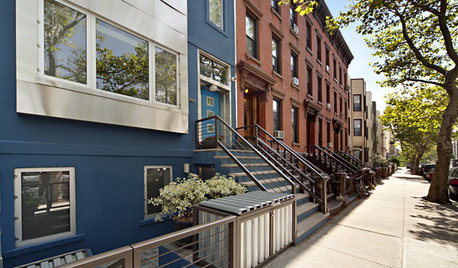Organic Lawn Care in Florida???
thorta
16 years ago
Related Stories

GARDENING GUIDESTree Care: Common Tree Diseases and What to Do About Them
Learn to recognize trees that may be affected by diseases or pests so you can quickly take action
Full Story
GRASSESHow to Rock a Lawn
Weekend Project: The key to healthy grass begins with the soil. If turf works for you, here’s how to fix it and keep it looking its best
Full Story
BEFORE AND AFTERSSee 6 Yards Transformed by Losing Their Lawns
Wondering whether a turf lawn is the best use of your outdoor space? These homeowners did, and they found creative alternatives
Full Story
LANDSCAPE DESIGNCalifornia Says Goodbye to the Sprawling Ornamental Lawn
New state rules will effectively limit turfgrass to 25 percent of the landscape in most new and renovated yards
Full Story
GREAT HOME PROJECTSHow to Replace Your Lawn With a Garden
New project for a new year: Lose the turfgrass for energy savings, wildlife friendliness and lower maintenance
Full Story
EARTH DAYThe Case for Losing the Traditional Lawn
Work less, help the environment and foster connections by just saying no to typical turf
Full Story
SAVING WATERHouzz Call: Are You Letting Go of Your Lawn?
Many facing a drought are swapping turf for less thirsty plantings. If you’re one of them, we’d like to hear about it
Full Story
GARDENING GUIDESSpring Citrus Care Reaps Months of Sweet Rewards
Learn how to tend citrus trees in spring and ways to preserve their delicious fruit
Full Story
COMMUNITYWant a Cleaner, Safer Neighborhood? Show You Care
Our behavior strongly influences others, says a new study. Show neighbors you care about your street and watch them follow suit
Full Story
GARDENING GUIDESHow to Switch to an Organic Landscape Plan
Ditch the chemicals for a naturally beautiful lawn and garden, using living fertilizers and other nontoxic treatments
Full Story





dchall_san_antonio
lou_spicewood_tx
Related Professionals
Maple Valley Landscape Architects & Landscape Designers · Summit Landscape Architects & Landscape Designers · Concord Landscape Contractors · Beverly Hills Landscape Contractors · Glendale Heights Landscape Contractors · Lantana Landscape Contractors · Tewksbury Landscape Contractors · Uxbridge Landscape Contractors · Fort Myers Driveway Installation & Maintenance · Tampa Swimming Pool Builders · El Monte Fence Contractors · Irvine Fence Contractors · North Potomac Fence Contractors · Owings Mills Fence Contractors · Saginaw Fence Contractorsdchall_san_antonio
maplerbirch
dchall_san_antonio
reddevil1628
florganicnatives